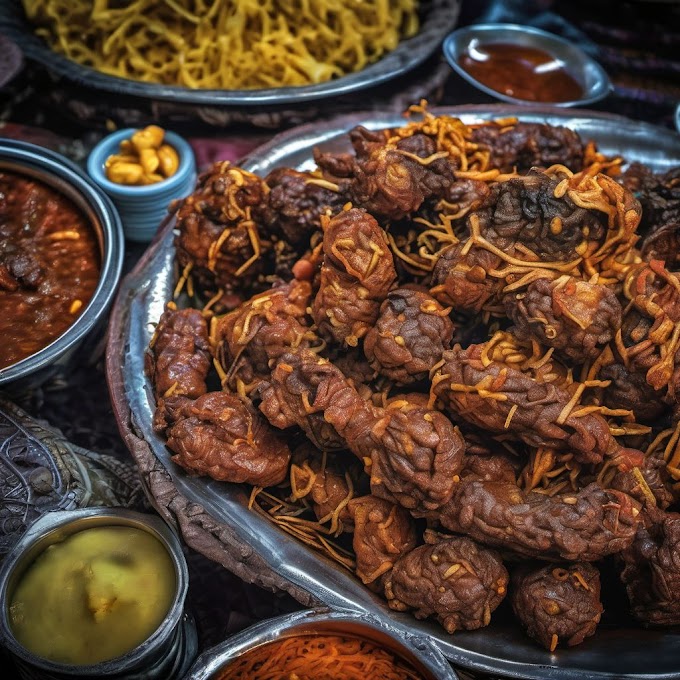How to make Okonomiyaki the Japanese pancake
Origin and History:
Okonomiyaki is a savory Japanese pancake that has become a popular street food dish throughout Japan. The word "Okonomiyaki" means "as you like it" in Japanese, and it allows for a variety of ingredients to be added to create different flavor combinations.
The origins of Okonomiyaki are unclear, but it is believed to have originated in Osaka, Japan, during World War II. During the war, food shortages were common, so people would mix flour, water, and whatever vegetables they had available to create a simple and hearty meal.
As food supplies improved, the dish became more popular and evolved to include toppings such as meat, seafood, and cheese. Today, Okonomiyaki is a beloved and customizable dish that is enjoyed throughout Japan and around the world.
Ingredients:
- 2 cups shredded cabbage
- 1 cup all-purpose flour
- 1/2 cup dashi (Japanese soup stock)
- 2 eggs
- 1/4 cup green onions, chopped
- 1/4 cup tenkasu (tempura bits)
- 1 tablespoon soy sauce
- 1 teaspoon baking powder
- 1/4 cup water
- 4 slices of bacon or other protein (optional)
- 1/4 cup katsuobushi (dried bonito flakes)
- 1/4 cup mayonnaise
- Okonomiyaki sauce
- Aonori (dried green seaweed, optional)
Instructions:
1. Combine the flour, dashi, soy sauce, baking powder, and eggs in a large mixing bowl.
2. Add the shredded cabbage, green onions, and tenkasu to the bowl and mix until everything is evenly coated.
3. Add water to the mixture and stir until the batter is smooth. If the mixture is too thick, add a little more water.
4. Heat a large non-stick frying pan over medium-high heat. Once the pan is hot, add bacon slices or other protein (if using) and cook until crispy and browned. Remove the bacon from the pan and set aside.
5. Pour the Okonomiyaki batter into the frying pan, using a spatula to evenly spread it out into a large pancake shape.
6. Top the Okonomiyaki with bacon slices or other protein (if using) and sprinkle katsuobushi (dried bonito flakes) on top.
7. After a few minutes, flip the Okonomiyaki over using a spatula and cook the other side for a few more minutes until golden brown and crispy.
8. Once the Okonomiyaki is cooked, remove it from the pan and drizzle with Okonomiyaki sauce and mayonnaise. Sprinkle with aonori (dried green seaweed) on top.
9. Cut the Okonomiyaki into slices and serve hot.
Enjoy your delicious and customizable Okonomiyaki!
Health Benefits
Okonomiyaki includes several healthy ingredients, such as shredded cabbage and green onions, which provide fiber and other beneficial nutrients for the body. Cabbage is rich in vitamin C, which is essential for immune function and skin health, and has been linked to a reduced risk of heart disease and certain types of cancer.
In addition, the dish uses dashi, a Japanese soup stock made from bonito fish flakes and kombu seaweed. This gives Okonomiyaki a rich flavor and also provides iodine, which is important for thyroid function and can be difficult to obtain from other food sources.
However, Okonomiyaki can be high in calories and sodium due to the use of sauces, bacon, and other toppings. To make the dish healthier, try using a low-sodium sauce, reducing the amount of mayonnaise used, and opting for lean protein such as shrimp or tofu instead of bacon.
Overall, Okonomiyaki can be a delicious and nutritious dish when prepared with healthy ingredients and portion sizes.
Variations:
Okonomiyaki can be customized with a variety of toppings and ingredients. Some popular toppings include shrimp, squid, cheese, mochi (pounded rice), and even noodles. The dish can also be made with different sauces, such as Worcestershire sauce or spicy sauce.
For vegetarians and vegans, the dish can be made without meat or seafood and with alternative protein sources like tofu or seitan. Gluten-free flour can also be used for those with dietary restrictions.
Fun Facts:
- Okonomiyaki is often cooked and served at the table on a hotplate called a teppan.
- In Osaka, Okonomiyaki is cooked in layers, with the filling on the bottom and batter on top. In Hiroshima, Okonomiyaki is cooked with noodles and a fried egg on top.
- The dish is so popular in Japan that there is even an Okonomiyaki museum in Hiroshima.
- In Japan, there is a variation of Okonomiyaki called "Monjayaki," which is a thinner and more soupy version of the dish that is popular in Tokyo.

.jpg)




%20(1).png)

